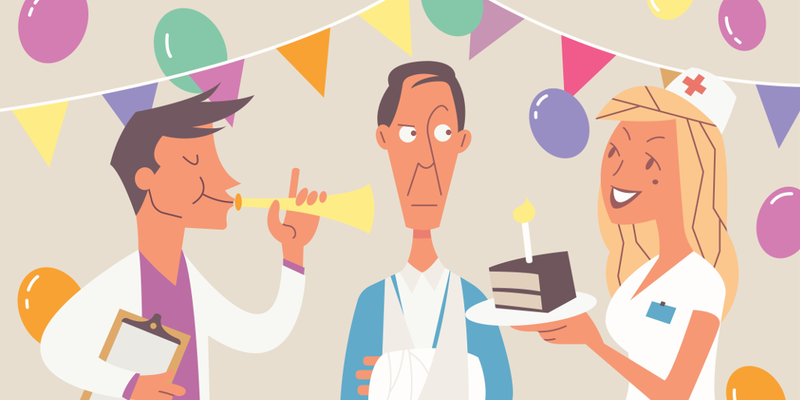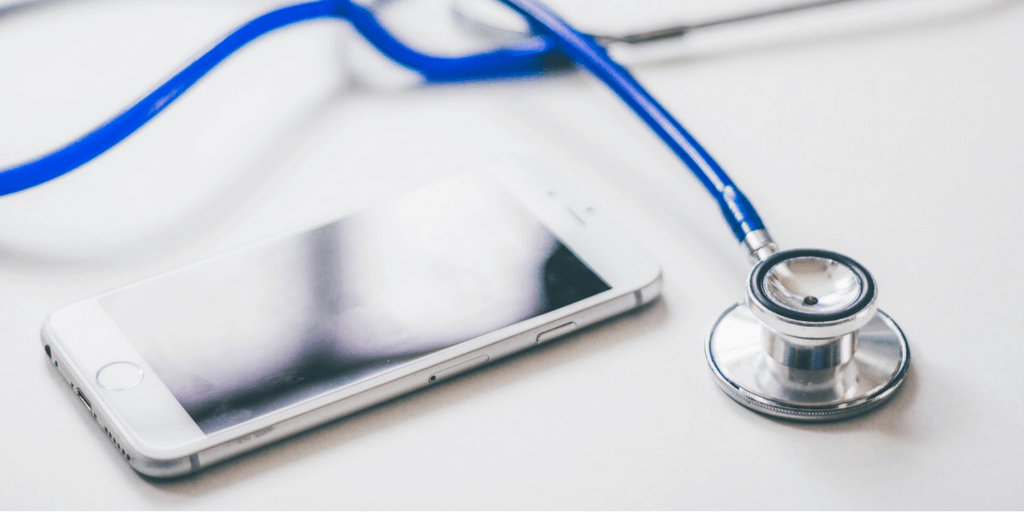Hospital experience is often associated with something impersonal and sterile. The question is, does it have to be?
Modern healthcare industry is chock-full of incredible, state-of-the-art tools. But doctors often forget one of the most important ones — greeting your patients.
Sounds easy enough? Get ready, there’s entire science behind it.
Let’s see how switching to a first-name basis can benefit both patients and doctors.
More Than Just an Icebreaker: The Effect of Greeting Patients
As a poet once said, "what’s in a name?" Why do patients want doctors and nurses to call them by their name?
In fact, do patients even want this at all?
The short answer: they do.
Most patients, especially under the age of 65, prefer their doctors to call them by their first name.
Age is a crucial factor. It turns out that the younger the patient is, the more positively they react to doctors using their first name.
Sounds great, right? Looks like patient-doctor relationship doesn’t need that much improvement.
In reality, despite their patients’ wishes, doctors don’t use first names in half of their first-time visits. So many missed opportunities of building good rapport with patients.
But why exactly is using patient’s first name that important? What are the benefits of hearing your name?
Put it simply, it shows genuine empathy on the part of medical staff. You start sitting a little taller when you hear your name, and already feel like your problems are taken care of.
Bottom line: Everyone wants to feel special. And even for something as no-nonsense as the healthcare industry, this still holds true.
Introduction serves as the first, integral part of the treatment process. When done right, it helps reduce the perception of wait times by making it feel like the patient is already being treated.
What's more, nurses greeting a patient shows their readiness to communicate. This simple gesture says, “I treat you as an individual, not as a faceless visitor”.
There is another surprising benefit to greeting visitors in hospitals. In his Checklist Manifesto, surgeon and public health researcher Atul Gawande introduces what he calls the “activation phenomenon”.
Throughout his years in healthcare, Gawande noticed how people more readily speak up hearing their own names. Being on a first-name basis helps have everyone on the same page.
Couple this with the research that found out that there is unique brain activation specific to hearing one’s name.
Calling patients by their first name has a tangible effect on the effectiveness of your care. In other words, quality patient care starts with quality patient greeting.
Using Queuing Tools to Make Your Service More Personal

The importance of greeting your visitors, be they patients or customers, is not a new topic for us.
Qminder takes greeting seriously. You can implement a name based patient queuing system such as Qminder to improve patient check-in flow and greet patients with their first name.
Now, when they are waiting in the line, they can see their name on a status screen. This creates a positive vibe and helps make patients feel like they are individuals and not just numbers in a queue.
One thing we recommend is to have a special person dedicated to greeting patients and handling their details.
This allows you to take the most out of personal approach and gather patient information from the get-go.
The information may include a patient’s phone number, the reason for their visit, allergies, etc.
The most important detail, of course, is your patient’s name.
First Impressions Matter: Why Doctors Need to Introduce Themselves
There is another side to patient-doctor communication — patients often don’t know the name of their treating physician.
In fact, the number of patients who can’t correctly name their doctor is in the ballpark of 82-90%. Out of this percentage, 57% of patients are unable to name a single member of the medical team.
Why does it matter?
Firstly, it’s just a matter of common courtesy. Once you learn the name of another person, it is only polite to introduce yourself, too.
Secondly — and more importantly — doctors spelling out their own names has a positive effect on patient satisfaction. When given a simple biosketch with their doctor’s data, patients experience a 22% increase in satisfaction level.
So there’s a concrete, tangible outcome to introducing yourself to your patients.
Healthcare shouldn’t just be about the outcome of its care, but also the quality and overall perception of this care. A proper introduction addresses the power imbalance between the patient and the doctor.
Once a patient steps into a doctor’s office, they are in a vulnerable position. They fully depend on their physician, and they need to be sure they can trust them.
It is a doctor’s duty to share a part of themselves. This, essentially, helps ease the tension and start the communication going.
An introduction allows not to keep the patient in the dark, by explaining your role, qualification, track record, etc. It brings patients and doctors together, by improving their perception of closeness.
Adding a Personal Touch in Healthcare

A patient and a doctor greeting each other is the first step in them building a personal connection. Even when it comes to healthcare, we shouldn’t ignore the power of human touch.
And when I say “touch”, I also mean it in the literal sense.
According to a survey, 80% patients wish to shake their doctor’s hand. This number is higher for older patients who see handshake as more traditional way of greeting.
The effects of shaking hands are more psychological than therapeutic. There is a clear benefit to nonverbal forms of communication, though — such as body language.
Mark Schleiss, MD, Division Director of Pediatric Infectious Diseases and Immunology at the University of Minnesota, considers handshake an important way of communicating with patient:
"Upon first meeting patients, it's a sign of respect and courtesy, and if you have a well-established relationship with a patient, it becomes almost an exchange of endearment."
That's not to say there are no exceptions. Some patients may prefer not to shake hands because of cultural differences. Some may opt out of shaking hands due to concerns about infection.
Despite all of that, greeting a patient remains a vital part of strengthening their satisfaction.
Starting a Conversation with Patients
But once you introduce yourself, what then? The next logical step is to ask patients how they are doing.
Be wary, though — there are nuances here as well. Simply asking “how are you?” may not be as good of a conversation starter as you think.
Think about it: how often have you answered “fine” when being asked the same? It’s practically a social reflex at this point.
John Tongue, MD, advises against a basic “How are you?” and recommends using an open-ended statements instead.
This makes it easier to start an actual conversation. An open-ended statement flows naturally into discussing ailments, feelings, personal issues, etc.
So next time a patient comes to see you, be sure to extend your hand and say “Hi, nice to meet you.” Remember: You don’t have a second chance to make the first impression.
Up Close and Personal: The Future of Hospital Experience

There is an idea that’s too often ignored: Hospitals are made by people, for people.
Getting quality care, of course, is vital, but building a personal connection is almost as important. And it doesn’t require much to build this connection.
Greeting your patients and using their first name is the easiest way to get in your patients' good graces.
Thankfully, healthcare has started catching up to this idea. Just take a look at the late Dr. Kate Granger's social media campaign — #hellomynameis. It has gained over 1.6 million impressions in Twitter and opened the eyes for many professionals in the industry.
Personal approach doesn’t only keep patient satisfaction levels high, it also helps make your hospital’s personality shine through.
Follow the Qminder Blog for more tips on how to turn your hospital experience into a delight for everyone.
After all, it's the small things that make all the difference.






